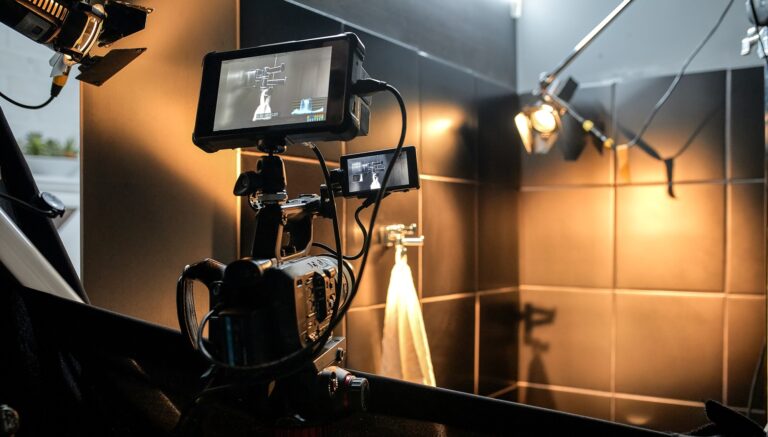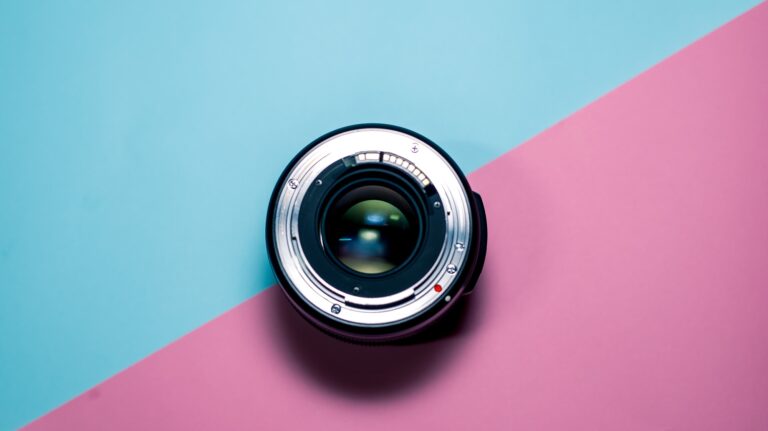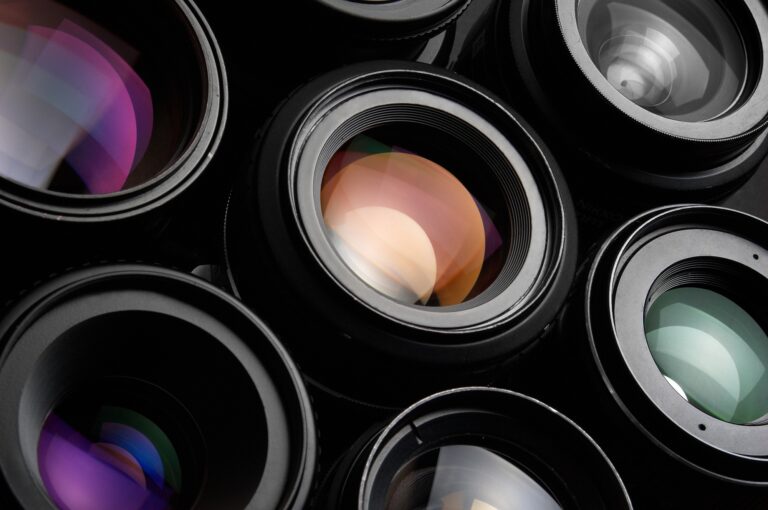In the world of visual arts, capturing the perfect shot is a sought-after skill. Whether you are a seasoned professional or a novice, understanding the rule of thirds is essential to creating engaging and balanced images. This guide aims to provide a comprehensive understanding of the rule of thirds in both photography and videography.
By the end of this four-part series, you’ll be equipped with the knowledge to create visually stunning and professional-grade content. Don’t hesitate to contact us for more information about how you can master this technique.
Part 1 of 4: Understanding the Rule of Thirds
1.1. Definition and Purpose
The rule of thirds is a basic composition guideline used by photographers and videographers alike to create visually appealing and balanced images. By dividing the frame into nine equal parts using two equally-spaced horizontal lines and two equally-spaced vertical lines, the rule of thirds helps in guiding the placement of crucial elements within the frame. The points where these lines intersect are considered the most visually compelling areas for positioning your subject.
1.2. Origins of the Rule of Thirds
The concept of the rule of thirds dates back to the 18th century when it was first introduced by painter John Thomas Smith. He recognized the importance of balance and harmony in visual arts and proposed this simple yet effective guideline to help artists create aesthetically pleasing compositions. This principle has stood the test of time and is still widely used today.
1.3. The Importance of Balance and Harmony
Balance and harmony are essential components of effective visual storytelling. By applying the rule of thirds, you can achieve a sense of stability and interest in your images, keeping your audience engaged. This fundamental guideline helps prevent clutter and distractions while directing the viewer’s focus to the most critical elements of your composition.
1.4. Applying the Rule of Thirds in Photography
In photography, the rule of thirds can be applied to a wide range of subjects and genres. Whether you’re shooting portraits, landscapes, or still life, this principle can be used to guide your composition and create visually captivating images. For instance, placing a subject’s eyes on one of the intersecting points in a portrait will draw the viewer’s attention to their gaze. In landscape photography, aligning the horizon with one of the horizontal lines can create a sense of depth and balance. Contact us for more information on how to apply the rule of thirds in various photographic scenarios.
1.5. Integrating the Rule of Thirds in Videography
Videography also benefits from the rule of thirds, as it helps create dynamic and engaging shots. By positioning key elements along the grid lines or at the intersecting points, you can achieve a visually pleasing composition that keeps your audience focused on the story. The rule of thirds can be applied to interviews, establishing shots, and even action sequences, ensuring your video content stands out.
1.6. Exceptions and Flexibility
While the rule of thirds is a valuable guideline, it’s essential to remember that it’s not a strict rule. In some cases, breaking the rule can lead to equally compelling images. Use your judgment and creative instincts to determine when to follow or deviate from the rule, as the ultimate goal is to create captivating visuals that tell your story.
1.7. Tools and Techniques for Applying the Rule of Thirds
Many modern cameras and editing software come equipped with tools that help implement the rule of thirds. Camera grids, live view overlays, and post-processing cropping tools can assist you in aligning your subjects with the grid lines and intersections. Practice and experimentation are crucial for mastering this technique.
1.8. The Role of the Rule of Thirds in Storytelling
The rule of thirds plays a significant role in visual storytelling. By guiding the placement of elements within your frame, you can direct the viewer’s attention to crucial aspects of your story. Whether you’re capturing a decisive moment in a photograph or composing a scene in a film, the rule of thirds can help you convey emotions, relationships, and themes effectively.
1.9. Mastering the Rule of Thirds for Professional Results
To become proficient in using the rule of thirds, practice is essential. Analyze your favorite photographs and films to identify how this principle has been applied. As you shoot, consciously compose your images using the rule of thirds and experiment with different subjects and scenarios. With time, the rule of thirds will become second nature, elevating the quality of your work. Contact us for more information on mastering the rule of thirds for professional results.
1.10. Expanding Your Creative Toolbox in Videography and Photography
While the rule of thirds is a fundamental technique in the world of visual arts, it’s just one of many principles that can elevate your work. Familiarize yourself with other composition guidelines, such as leading lines, symmetry, and the golden ratio, to further enhance your creative toolbox and make your images and videos stand out.
Conclusion: In the first part of this comprehensive guide, we’ve explored the concept, origins, and application of the rule of thirds in both photography and videography. This powerful composition principle can significantly improve your visual storytelling, creating captivating and balanced images that keep your audience engaged. Remember to experiment, practice, and, when necessary, break the rule to find your unique creative voice.
Stay tuned for the next part of this series, where we’ll delve deeper into the practical aspects of using the rule of thirds in different scenarios. And as always, don’t hesitate to contact us for more information about how to make the most of the rule of thirds in your work.

In the first part of this comprehensive guide, we explored the basics of the rule of thirds, its history, and its importance in photography and videography. In this second part, we will dive deeper into the practical application of the rule of thirds, discussing advanced techniques and showcasing examples to inspire your creativity. Don’t forget to contact us for more information on how to effectively apply this fundamental principle to your visual projects.
Part 3 of 4: Troubleshooting and Overcoming Challenges
2.1. Rule of Thirds in Portrait Photography
In portrait photography, the rule of thirds can enhance the visual impact of your images by drawing the viewer’s attention to the subject’s eyes or other essential features. Placing the subject’s eyes along the horizontal grid lines or near the intersection points will create a more engaging and dynamic portrait. Experiment with different angles and perspectives to find the perfect balance.
2.2. Rule of Thirds in Landscape Photography
Landscape photography can greatly benefit from the rule of thirds, as it helps create depth and balance in your images. Aligning the horizon with one of the horizontal lines, either the top or bottom third can prevent your image from feeling split in half. Positioning points of interest at the intersection points can further enhance the composition and create a more visually appealing landscape.
2.3. Rule of Thirds in Action Photography
In action photography, the rule of thirds can convey a sense of movement and direction. Positioning the subject along one of the vertical lines or at an intersection point will create a dynamic composition that emphasizes the action. Leaving negative space in the direction the subject is moving can further enhance the sense of motion and energy in your image.
2.4. Rule of Thirds in Still Life and Product Photography
The rule of thirds can also be applied to still life and product photography to create well-balanced and visually interesting images. Arranging your subject or focal points at the intersection points will draw the viewer’s attention to the most critical elements. Experiment with different compositions and backgrounds to find the perfect balance and create a visually appealing image.
2.5. Rule of Thirds in Architectural Photography
Architectural photography can benefit from the rule of thirds by emphasizing the lines, shapes, and patterns present in buildings and structures. Aligning key elements such as windows, doors, or columns along the grid lines can create a visually pleasing and harmonious composition. Experiment with various angles and perspectives to capture the beauty and uniqueness of the architecture.
2.6. Rule of Thirds in Filmmaking and Cinematography
In filmmaking and cinematography, the rule of thirds plays a vital role in crafting compelling visuals that support your story. Placing characters, props, or scenery along the grid lines or at intersection points can enhance the visual flow of a scene and guide the viewer’s attention. This technique is especially useful in interview shots, where positioning the subject slightly off-center can create a more engaging and dynamic composition.
2.7. Advanced Techniques: Combining the Rule of Thirds with Other Composition Guidelines
To further elevate your visual projects, consider combining the rule of thirds with other composition guidelines such as leading lines, framing, and negative space. These techniques can work together to create even more dynamic and engaging images. Experiment with different combinations to find the perfect balance that enhances your story and captivates your audience.
2.8. Editing and Post-Processing: Enhancing the Rule of Thirds
Post-processing tools, such as cropping and image alignment, can help you refine your compositions and better implement the rule of thirds. Analyze your images during the editing process and make adjustments as needed to create more balanced and visually appealing results. Contact us for more information on how to enhance the rule of thirds in post-processing and improve your final images.
2.9. Analyzing Examples: Learning from the Masters
To further your understanding of the rule of thirds, study the work of renowned photographers and filmmakers. Analyzing their compositions and observing how they have applied the rule of thirds can provide valuable insights and inspiration for your projects. Take note of how these professionals have balanced their subjects within the frame and combined the rule of thirds with other composition techniques to create visually stunning works of art.
2.10. Practice Makes Perfect: Developing Your Eye for Composition
The more you practice applying the rule of thirds to your photography and videography, the more intuitive it will become. Challenge yourself to experiment with different subjects, styles, and scenarios to refine your skills and develop your unique visual voice. As you grow more comfortable with the rule of thirds, you will naturally begin to recognize and capture well-balanced and visually appealing compositions.
Conclusion
In this second part of our comprehensive guide, we have delved into the practical application of the rule of thirds, discussed advanced techniques, and provided examples to inspire your creativity. By applying these principles and practices to your photography and videography projects, you will create visually captivating content that effectively conveys your story and engages your audience.
Stay tuned for the next part of this series, where we will explore the rule of thirds in greater depth and discuss more advanced composition techniques to further elevate your work. And as always, don’t hesitate to contact us for more information on how to master the rule of thirds in your visual projects.
—
Troubleshooting and Overcoming Challenges. In the previous parts of our comprehensive guide, we have discussed the fundamentals, practical application, and advanced techniques of the rule of thirds in photography and videography. In this third part, we will focus on troubleshooting and overcoming challenges you may encounter when implementing the rule of thirds.
By addressing these common issues, you can refine your skills and create even more captivating visual content. As always, don’t hesitate to contact us for more information on how to enhance your understanding and mastery of the rule of thirds.
3.1. Addressing Common Composition Mistakes
When applying the rule of thirds, it’s crucial to be aware of common composition mistakes that can detract from your images. One such mistake is placing the subject directly in the center of the frame, which can result in a static and uninteresting composition. To avoid this, ensure that you position your subject along the grid lines or at the intersection points to create a more dynamic and visually engaging image.
3.2. Finding Balance in Complex Scenes
In some cases, you may encounter complex scenes with multiple points of interest. To create a well-balanced composition, consider the visual weight of each element and how they interact within the frame. Using the rule of thirds as a starting point, arrange your subjects and focal points so that they create harmony and balance within the image.
3.3. Adapting the Rule of Thirds to Different Formats and Aspect Ratios
The rule of thirds can be applied to various formats and aspect ratios, from square images to widescreen video footage. When working with different formats, it’s essential to adjust your composition accordingly. Keep in mind that the grid lines and intersection points may shift slightly depending on the aspect ratio, so always ensure that your composition remains visually balanced and engaging.
3.4. Overcoming Challenges in Low Light Conditions
Low light conditions can pose challenges when applying the rule of thirds, as it may be difficult to see the grid lines on your camera’s viewfinder or screen. To overcome this, consider using an external light source, such as a flashlight, to illuminate the scene temporarily and help you align your composition. Alternatively, use your camera’s built-in focus points or grid overlay to assist in positioning your subject according to the rule of thirds.
3.5. Working with Fast-Moving Subjects
Capturing fast-moving subjects while adhering to the rule of thirds can be challenging. To overcome this, consider using a continuous or burst shooting mode to capture multiple frames in quick succession. This will increase your chances of capturing a well-composed image that adheres to the rule of thirds.
Additionally, practice tracking and anticipating the movement of your subject to improve your skills in action photography and videography.
3.6. Implementing the Rule of Thirds in Post-Production
If you find that your composition doesn’t quite adhere to the rule of thirds, don’t worry – you can still make adjustments in post-production. Using cropping and alignment tools in photo or video editing software, you can fine-tune your composition and better align your subjects with the rule of thirds.
Contact us for more information on how to effectively apply the rule of thirds in post-production.
3.7. Developing Your Intuition for Composition
As you continue to practice and apply the rule of thirds, you will develop a natural intuition for composition. This intuitive understanding will enable you to compose well-balanced images and videos with ease, even in challenging situations. Remember that practice is essential for developing your compositional instincts, so keep shooting and experimenting.
3.8. Knowing When to Break the Rule
While the rule of thirds is an invaluable guideline for creating visually appealing
compositions, there are instances when breaking the rule may yield even more compelling results. It’s essential to develop your artistic instincts and recognize when deviating from the rule of thirds can enhance your visual storytelling. Experiment with unconventional compositions and don’t be afraid to break the rule when it serves your creative vision.
3.9. Embracing Your Unique Style and Vision
As you become more comfortable with the rule of thirds and other composition techniques, embrace your unique style and vision. Your personal approach to composition can set your work apart and make it more memorable. Continue to explore and experiment with various techniques, always striving to refine and evolve your style.
3.10. Seeking Feedback and Continuing to Learn
One of the most effective ways to improve your understanding and application of the rule of thirds is to seek feedback from others. Share your work with fellow photographers, videographers, or mentors, and ask for their input on your compositions.
Engage in constructive discussions and learn from the insights of others. Additionally, continue to study the work of professionals and attend workshops or seminars to further expand your knowledge of composition techniques.
Conclusion: In this third part of our comprehensive guide, we have discussed troubleshooting and overcoming challenges related to the rule of thirds in photography and videography. By addressing these common issues and honing your skills, you can create more captivating and visually engaging content.
Stay tuned for the final part of this series, where we will explore the broader implications of the rule of thirds in the visual arts and discuss how this fundamental principle continues to shape the work of photographers and videographers worldwide. As always, don’t hesitate to contact us for more information on how to master the rule of thirds in your visual projects.

In the previous parts of our comprehensive guide, we have covered the fundamentals, practical application, advanced techniques, and troubleshooting of the rule of thirds in photography and videography. In this final part, we will explore the broader implications of the rule of thirds, its impact on the visual arts, and its potential future developments.
As always, feel free to contact us for more information on how to master the rule of thirds and elevate your visual projects.
Part 4 of 4: Broader Implications and the Future of the Rule of Thirds
4.1. The Rule of Thirds in Art and Design
The rule of thirds extends beyond photography and videography, influencing various forms of visual arts, including painting, illustration, and graphic design. Artists and designers can apply this principle to create balanced and harmonious compositions, guiding the viewer’s eye through their work and enhancing the overall aesthetic appeal.
4.2. The Psychological Impact of the Rule of Thirds
The rule of thirds resonates with viewers on a psychological level, as it creates visually balanced and harmonious compositions that are naturally pleasing to the eye. By applying the rule of thirds, you can create images and videos that evoke emotions, convey messages, and engage your audience more effectively.
4.3. Cultural Variations and the Rule of Thirds
While the rule of thirds is widely embraced in Western art, other cultures may have different approaches to composition and balance. When working with diverse audiences or creating content for international markets, it’s essential to be aware of cultural variations and adapt your compositions accordingly. Research and learn about the visual preferences of your target audience to create culturally appropriate and engaging content.
4.4. The Rule of Thirds and Technology
Advancements in technology have made it easier than ever to apply the rule of thirds in your photography and videography projects. Many cameras and smartphones now include built-in grid overlays or focus points that align with the rule of thirds, helping you compose well-balanced images and videos effortlessly.
As technology continues to evolve, we can expect even more tools and features designed to aid in the application of this essential composition principle.
4.5. The Role of Artificial Intelligence in Composition
Artificial intelligence (AI) is increasingly being used in the field of photography and videography, with some AI-powered tools offering composition suggestions based on the rule of thirds and other established principles. As AI continues to advance, we can expect it to play a more significant role in assisting photographers and videographers in creating visually appealing and balanced compositions.
4.6. The Future of Composition Techniques
As photography and videography continue to evolve, we can expect new composition techniques to emerge and influence the way we create visual content. While the rule of thirds will likely remain a fundamental principle, it’s essential to stay informed about new developments and trends to ensure your work remains fresh and engaging.
4.7. Continuing Education and Skill Development
To stay ahead in the ever-evolving world of photography and videography, it’s crucial to invest in continuing education and skill development. Attend workshops, seminars, and online courses to learn about the latest techniques, trends, and technologies related to composition and the rule of thirds. Networking with other professionals can also provide valuable insights and inspiration for your work.
4.8. The Importance of Personal Growth and Experimentation
While mastering the rule of thirds and other composition techniques is essential, personal growth and experimentation are equally important. Challenge yourself to explore new styles, subjects, and approaches in your photography and videography projects. By pushing your boundaries and taking creative risks, you can develop your unique visual voice and create more impactful and memorable content.
4.9. Sharing Your Knowledge and Experience
As you gain experience and expertise in the rule of thirds and other composition techniques, consider sharing your knowledge with others. Mentor aspiring photographers and videographers, contribute to online forums, or even create educational content to help others improve their skills. Sharing your insights can not only help others grow but also enhance your understanding and mastery of the rule of thirds.
4.10. The Lasting Impact of the Rule of Thirds
Despite the continuous evolution of photography and videography, the rule of thirds remains a timeless and essential composition principle that continues to shape the work of visual artists worldwide. By mastering the rule of thirds and adapting it to your unique style, you can create visually compelling content that engages your audience and leaves a lasting impact.
Conclusion: Throughout this comprehensive guide, we have explored the rule of thirds in-depth, covering its fundamentals, practical application, advanced techniques, troubleshooting, broader implications, and future developments.
By understanding and applying the rule of thirds in your photography and videography projects, you can elevate your work and create visually engaging content that effectively conveys your story and connects with your audience.
As you continue to grow and evolve as a visual artist, remember to stay informed about new trends, techniques, and technologies, and always be open to experimentation and personal growth. And as always, don’t hesitate to contact us for more information on how to master the rule of thirds and other essential composition techniques in your visual projects.





